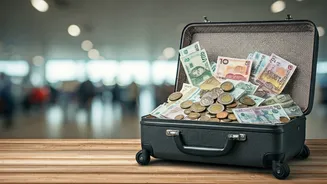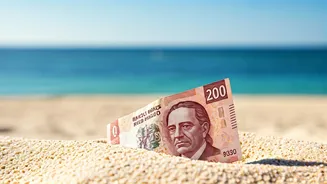Rising Travel Expenses
The year 2026 is shaping up to be a period of increased travel expenses for tourists heading to popular global locations. Several countries and cities
are responding to the demand in tourism by introducing various financial impositions that could cause a dent in the travelers’ pockets. Hotel taxes are rising in several regions of Spain and Japan. Norway has plans to charge up to a 3% municipal tourism levy. Greece is planning to charge cruise passengers up to ₹1,800. Also, Venice will implement a ₹450 day-visitor entry fee, and Thailand is planning a ₹700 entry fee for tourists. These changes are indicating a significant shift in travel finances.
Hotel Tax Implications
Hotel taxes are on the rise in various locations, notably in Spain and Japan. These new taxes are poised to increase accommodation costs for tourists visiting these areas. The exact percentages and specific details of these hotel taxes may vary depending on the regions and local authorities implementing them. Nonetheless, these additional costs should be considered when estimating travel budgets for 2026. Travelers need to check and compare accommodation prices and incorporate these added taxes into their overall expenditures. The increase in hotel taxes reflects the changing dynamics of the travel industry, with destinations aiming to generate additional revenue. The extra revenue collected by this tax is expected to be utilized by the local governing bodies to improve and better the services to tourists, in effect leading to a better tourist experience.
Diverse Fee Structure
Additional tourist fees are becoming a common occurrence in several destinations. These charges vary in application and amount, impacting different aspects of the travel experience. For example, Venice will implement a ₹450 day-visitor entry fee, while Thailand will charge tourists a ₹700 entry fee. Greece will levy cruise passengers with fees reaching up to ₹1,800. These fees are aimed at managing tourism and generating income. Some fees, like the day-visitor entry fee in Venice, are intended to manage tourist numbers and ease congestion. Others, such as those imposed on cruise passengers and tourists, serve as revenue sources. Travelers should research these fees, which can have significant effects on the overall travel budget, with implications for itinerary planning.
Norway's Tourism Levy
The implementation of tourism levies is another trend in travel financing. Norway is set to introduce a municipal tourism levy of up to 3% to generate revenue from tourism. This levy may be applied to accommodation, services, or other tourist-related spending. The revenue will be used to support local infrastructure, manage tourism impact, and enhance the overall travel experience. This levy aims to spread tourism costs, ensuring that tourism benefits contribute to the upkeep and development of the destinations. Travelers planning a trip to Norway in 2026 should factor in this extra levy to ensure an accurate understanding of their total expenses. Further study into the exact details of the levy, including the specifics of how it applies and what it covers, is always recommended.
Budgeting and Planning
The emerging trends of hotel taxes, tourist fees, and tourism levies point to a transformation in travel costs for the year 2026. Spain and Japan's increasing hotel taxes alongside Norway's introduction of municipal tourism levies are all contributing to a new financial environment. Greece's ₹1,800 cruise passenger charge and Venice's ₹450 day-visitor fee, along with Thailand's ₹700 entry fee, demonstrate a push to manage tourism and generate revenue. These financial shifts will affect travel budgets and itinerary planning and force tourists to weigh various considerations. These changes will encourage travelers to assess their expenditures and prepare accordingly. It becomes essential to budget accurately and to be aware of the total cost of any journey. Keeping up-to-date with the latest developments will support a smooth travel experience.











